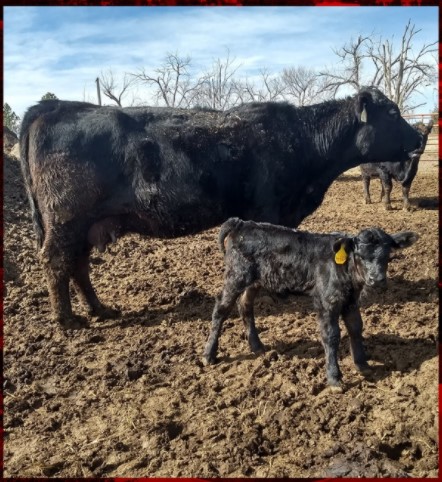Whether or not we work in agriculture, in rural Nebraska and other farming and ranching areas, agriculture provides us with some of the first signs of spring. We have all smiled at newborn baby calves bucking, head butting each other, and running with their tails sticking straight out.

But those who aren’t farmers or ranchers, or otherwise involved in agriculture, might wonder what “calving season” is and why it is such a big deal to the men and women of agriculture. Driving by those playing calves, they might not realize all that goes into making sure those babies get a good, healthy start.
Calving season brings more intense work to the ranchers – in addition to what they have been doing all winter, like feeding the cattle, chipping and pitching ice off tanks, making sure the cattle have windbreaks, and at times bedding. Cows have to be checked more regularly for signs of going into labor. This is especially true for heifers, young cows expecting their first calf.
This often means someone has to check them every two hours through the night as well as in the daytime. Many cattle producers are married couples and they usually split the night shifts and work together on the day shifts. This is where the old saying comes from: “Couples don’t need marriage counseling, they just need to work cattle together and figure out what the real issues are right there”.
Weather is seldom the cattleman’s friend in the Great Plains, where the majority of the cattle are raised. Spring is especially volatile and can bring temperature swings from mild, sunny 40-degree days to frigid wind chills of minus-20 degrees Fahrenheit and blizzards. Those responsible for the cattle have to feed and care for the cattle either way.
The positive side of a minus-20-degree wind chill is that two Carhartt coats on top of coveralls make all of us look fat, and if an upset mama cow hits you for getting too close to her baby, there is a lot of padding there to cushion the hit. Additionally, if you have to scale the fence in this attire plus insulated muck boots, you can skip going to the gym today.
Newborn calves are usually given an ear tag to identify who the mother is, possibly a vaccine, and may be moved with their cow to a “pair” pen away from the cows who have not calved. Most cows will deliver their calves unassisted, but if the weather is especially cold, the newborn calf may need to be temporarily removed from the cow and rapidly warmed up in a warmer box, a water bath, or through other means. A calf should have a body temperature of 101 degrees. A calf whose body temperature drops below 86 degrees will die without intervention.
If a blizzard or an arctic blast hits during calving, typically everyone in the operation finds themselves checking cows, attending babies, running towels through the laundry for the next wave of wet babies, or whatever else needs to be done. The kitchen is often taken over by cold baby calves.
Cattle production is both a science and an art and producers are very knowledgeable about best-management practices necessary for a healthy cow and calf. A cow may need assistance delivering the caIf if she is not making progress in a reasonable amount of time. This is a messy process, which typically leaves the person assisting the cow covered in afterbirth fluid - which does not smell like perfume.
My husband told me once about taking a girl on a date and having to deliver a calf on the date. He said he never saw her again after that day. Looking at the dried afterbirth on my coveralls, the cow poop splattered in my hair, and feeling the sticky colostrum on my fingers, it dawned on me that my stunning good looks and charming personality were likely not actually what earned me the Mrs. in front of my name.
Calves get their immunity through colostrum, the first milk a cow produces when a calf is born, which must be received as soon as possible after birth. If the calf is slow to get up and nurse, the producer has to assist the calf with nursing or supplement the calf with a powdered colostrum supplement. Farmers and ranchers spend a lot of time observing all the calves to make sure they are nursing and bonding well with their cow.
Young calves can be especially susceptible to illness the first two months of life. The weather, and the environment it creates, are hard-to-control factors that can aggravate illness in young calves. Therefore, producers keep a vigilant eye on each calf to catch any signs of illness early and treat the calf appropriately for the best chances of a quick and complete recovery.
The hours are long and the work is hard, but the rewards are great. Seeing a healthy calf crop running, bucking, and growing makes each exhausted cattle producer look forward to next year and ready to take on whatever challenges the weather and the markets bring. So next time you drive by a pasture of frolicking calves, think about the people behind the scenes who quietly oversee the dawn of new birth every year.
Source : unl.edu